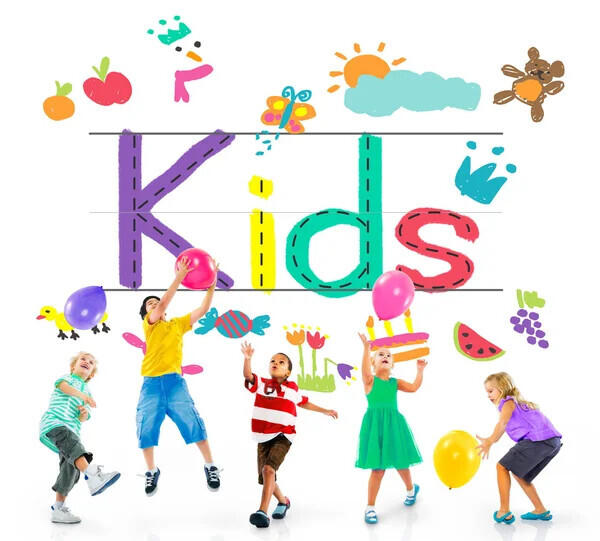Laugh and Learn
“Laugh and learn” has been my standing “thought’ in all the years I have taught English to other nationalities. We remember better when we are enjoying ourselves. It was true 20 years ago and it is still true now.
Talking about learning through play isn’t just trendy jargon. It’s rooted in solid research showing kids benefit a heap from playful learning environments. Both structured and unstructured play are crucial for little ones’ development.
Cognitive development gets a major boost when you throw some play into the mix. Through play, kids develop problem-solving skills and learn how to think creatively. Have you ever watched a child build a fort with cushions and blankets? That’s them figuring out spatial awareness and improving motor skills, all while pretending they’re on a heroic quest—or simply trying to make a comfy hideout.
Social and emotional skills are other heavy-hitters in the play arena. When children engage in play, they’re also learning empathy, sharing, and cooperation. Imagine a playground scene where children negotiate over who gets to be the superhero or share the slide—these interactions help develop negotiation and conflict resolution skills.
Research from fields like child psychology and education repeatedly finds that playful learning experiences significantly enhance these skills. Studies reveal that play encourages brain development more effectively than rote memorization because it taps into natural curiosity.
Now, not all of it is made equal when it comes to play. Structured play, like games with rules, helps kids practice specific skills in a focused way. Think of a game of tag—they learn about rules, teamwork, and strategy. Unstructured play, however, is where creativity bursts into life. Here, kids take the lead, letting imagination run wild as they invent roles and scenarios. Both types of play are fundamental, complementing each other in boosting overall development.
Incorporating Play in the Classroom: Strategies and Techniques
Mixing play with learning isn’t just fun; it’s smart teaching. Integrating play into educational settings not only makes learning engaging but also more effective.
Teachers have a creative role in sprinkling play throughout their lessons. By doing so, they ignite curiosity and motivate students. Imagine a math class involving a scavenger hunt where students find different shapes in the classroom. They’re learning geometry and getting active at the same time.
There’s a variety of playful activities that teachers can use across different subjects. Word games for language arts, role-playing exercises for history, or even science experiments disguised as fun challenges can all transform lessons. The key lies in creating activities that align with educational goals while captivating kids’ attention.
A teacher’s role isn’t just about crafting clever games. It’s about knowing when to let kids explore independently and when to guide them through structured activities. Balancing these approaches ensures that play remains educational rather than just entertaining.
Staying flexible is crucial. Every classroom and group of students is different, so what works well one week might need a tweak the next. Rather than sticking rigidly to a plan, teachers should observe students’ reactions and adjust activities to maintain engagement and educational value.
Play-Based Learning at Home: A Guide for Parents
Home is the first and often the most impactful classroom. Parents have incredible opportunities to nurture learning through play right within their everyday spaces. Creating a play-friendly environment at home is about more than just having toys. It’s about making sure there’s space and time for exploration and curiosity to flourish.
Different types of play support varied aspects of development, and each one has its charm and educational benefits. Building with blocks can introduce basic math skills and physics concepts. Pretend play, like setting up a ‘restaurant’, can boost language skills and social understanding. Don’t overlook outdoor activities, which provide a sensory-rich way to learn about nature and physical coordination.
Encouraging play doesn’t need to be complicated or involve expensive materials. Everyday items, like kitchen utensils or cardboard boxes, can become the tools of exploration for the young mind. Parents can dive into these play sessions, taking on roles or simply observing, to understand how their child interacts with the world.
Understanding your child’s play style can help tailor activities to their interests and strengths. Some kids might thrive in imaginative play while others might lean more toward problem-solving or building activities. Observing and interacting during these play sessions can provide insights into your child’s preferences and learning styles. It’s less about steering their play and more about supporting their natural curiosity.
Click here to find my “Favorite 10 ESL Websites” to help with resources.
Digital Play and Its Role in Modern Learning
Digital play has found its way into contemporary learning, blending fun with valuable educational content. It’s essential to look at these digital experiences just like any other toy or game—by considering their educational value and engagement factor.
Educational apps and games have become go-to resources for parents and teachers alike. They offer a staggering variety of tools to support learning across different subjects. Math puzzles, language learning through interactive stories, and science simulations: they make learning as captivating as a blockbuster adventure.
While the benefits of digital play are numerous, it’s important to set boundaries. Balancing screen time with traditional play activities ensures children still engage with the physical world around them. Mix and match—use tech as just one tool in the broader learning toolkit.
When choosing digital resources, focus on quality and age-appropriateness. Parents and educators should look for apps that encourage creativity and critical thinking rather than merely repetitive tasks. Reading reviews and trying some apps yourself can provide a sneak peek into what experiences these platforms offer.
Incorporating digital play into learning doesn’t mean replacing other forms of play. Instead, it complements them by providing new dimensions and opportunities for learning. Used wisely, digital resources can enhance development while making the learning journey both effective and enjoyable.
Games to Learn English for Kids.
Here are some fun games to help kids learn English:
- Word Bingo: Create bingo cards with English words. Call out the words, and kids mark them on their cards.
- Simon Says: A classic game that helps with listening skills. Use English commands for kids to follow.
- Pictionary: Kids draw a word or phrase, and others guess what it is. This enhances vocabulary and understanding.
- Flashcard Games: Use flashcards for vocabulary. Kids can play memory games or matching games with them.
- Story Cubes: Use dice with pictures. Kids roll the dice and create a story using the images they roll.
- Hangman: A fun way to practice spelling and vocabulary. One player thinks of a word, and others guess letters.
- Online Language Games: Websites like ABCmouse or Duolingo have interactive games tailored for kids.
- Role-Playing: Set up scenarios where kids can practice speaking in English, like ordering food or shopping.
- Charades: Kids act out words or phrases without speaking, while others guess. This helps with vocabulary and comprehension.
- Scavenger Hunt: Create a list of items in English for kids to find around the house or yard.
One of the best websites for “games for kids” is Twinkl. I have no affiliate links with them, so I am unbiased about my opinion. Check them out here and see what you think.
Click on the logo to access twinkl.
Twinkl Logo and link.
They have an introductory offer of 23,000 dong for the first month, which reverts to 108,000 dong after 30 days. ( I live and teach in Vietnam; 23,000 dong is about $1.00 US, and 108,000 dong is about $4.40)
Conclusion.
We each have our own style of teaching using different methodologies and what we believe works best for both our students and us.
There is no “one” correct way of teaching and often we have to change, as teachers, to make sure our students understand. The one thing I have learned in my years of teaching is we need to be flexible in how we teach and open to new ideas.
Embracing new ideas and ways of teaching will continue to help your students in their development.
Steve

You can look at my home in Vietnam by clicking on this link which will take you to my YouTube channel.
Any or all links on this site may be affiliate links, and if you purchase something through those links I will make a small commission on them.
There will be no extra cost to you and at times due to my affiliation, you could actually save money.
You can read our full affiliate disclosure here.


